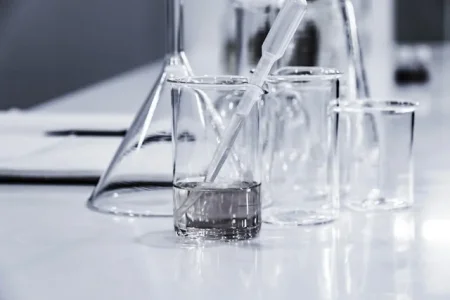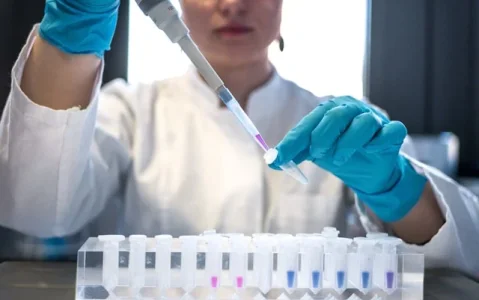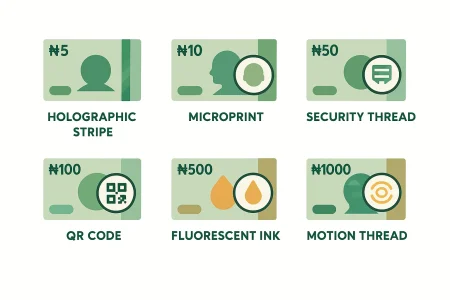Laboratory equipment is the backbone of scientific research and experimentation. Whether you're setting up a new lab or upgrading existing equipment, finding quality lab instruments is crucial for accurate results, efficiency, and safety. However, navigating the vast array of options can be daunting. This complete guide is designed to assist you in understanding the key factors to consider when searching for quality lab equipment.

Photo by Hans Reniers on Unsplash
Analytical Balances: Consider readability, precision, and capacity.
Centrifuges: Look at speed range, rotor compatibility, and safety features.
Microscopes: Evaluate magnification, resolution, and imaging capabilities.
Spectrophotometers: Check wavelength range, accuracy, and data output options.
Understanding these specifications and how they align with your research needs is essential for choosing the right equipment.
Overload Protection: Prevents damage to the instrument and ensures user safety.
Safety Interlocks: Ensures that equipment cannot be operated unless all safety measures are in place.
Emergency Shut-Offs: Allows quick response in case of accidents or malfunctions.
Additionally, verify that the equipment complies with relevant safety standards and regulations.

Photo by Julia Koblitz on Unsplash
Finding quality lab equipment requires careful consideration of various factors, from performance specifications and reliability to budget constraints and environmental sustainability. By defining your needs, assessing quality, evaluating performance specifications, and considering factors such as calibration, maintenance, safety, and user experience, you can make informed decisions that enhance your laboratory capabilities and reputation. Remember to stay informed about technological advancements and plan for future expansion to ensure that your lab remains efficient, productive, and equipped for ongoing research and innovation.

Photo by Hans Reniers on Unsplash
Exploring Thermodynamics with Lab Equipment
Thermodynamics is a fascinating branch of science that deals with the study of energy transfer and transformation within systems. When it comes to conducting experiments related to thermodynamics, in laboratory settings, specialized equipment plays a crucial role. Instruments such as calorimeters, thermocouples, and heat exchangers are essential for measuring heat flow, temperature changes, and thermal properties of materials. These tools enable researchers to explore fundamental thermodynamic principles, including heat transfer, entropy, and energy conservation. By utilizing advanced lab equipment, scientists can conduct precise and controlled experiments, leading to a deeper understanding of thermodynamics and its applications in various fields, from engineering to environmental science.Define Your Needs
The first step in finding quality lab equipment is to clearly define your needs. Consider the type of experiments or analyses you'll be conducting, the volume of samples, and the level of precision required. Different disciplines, such as chemistry, biology, physics, and environmental science, may have specific equipment requirements. Make a list of essential instruments and their specifications to guide your search.Assess Quality and Reliability
Quality and reliability are paramount when it comes to lab equipment. Look for reputable brands and manufacturers known for producing high-quality instruments. Check for certifications, such as ISO accreditation, which ensure that the equipment meets international standards for performance and safety. Reading reviews and seeking recommendations from colleagues or industry experts can also help gauge the reliability of a particular product or brand.Consider Calibration and Maintenance
Calibration and maintenance are critical aspects of ensuring the accuracy and longevity of lab equipment. Choose instruments that are easy to calibrate and maintain, preferably with user-friendly interfaces and clear instructions. Some equipment may require regular calibration by trained technicians, so factor in the availability of service and support when making your selection.Evaluate Performance Specifications
Each type of lab equipment comes with specific performance specifications that determine its capabilities and limitations. For example:Analytical Balances: Consider readability, precision, and capacity.
Centrifuges: Look at speed range, rotor compatibility, and safety features.
Microscopes: Evaluate magnification, resolution, and imaging capabilities.
Spectrophotometers: Check wavelength range, accuracy, and data output options.
Understanding these specifications and how they align with your research needs is essential for choosing the right equipment.
Budget Considerations
Budget is a significant factor in purchasing lab equipment. While quality instruments may come at a higher initial cost, they often offer better performance, accuracy, and durability, leading to long-term cost savings. Create a realistic budget based on your requirements and prioritize essential equipment. Consider both the upfront cost and ongoing maintenance expenses when assessing affordability.Compatibility and Integration
Ensure that the lab equipment you choose is compatible with existing systems and workflows in your laboratory. Integration with laboratory information management systems (LIMS), data analysis software, and other instrumentation can streamline processes and improve efficiency. Compatibility also extends to accessories, consumables, and spare parts availability, which are essential for uninterrupted operation.Safety Features
Safety should always be a top priority in the laboratory environment. When selecting lab equipment, look for built-in safety features such as:Overload Protection: Prevents damage to the instrument and ensures user safety.
Safety Interlocks: Ensures that equipment cannot be operated unless all safety measures are in place.
Emergency Shut-Offs: Allows quick response in case of accidents or malfunctions.
Additionally, verify that the equipment complies with relevant safety standards and regulations.
Ergonomics and User Experience
User experience plays a significant role in the effectiveness and efficiency of lab work. Choose equipment with ergonomic designs, intuitive controls, and ergonomic accessories to reduce user fatigue and improve productivity. Consider factors such as ease of sample loading, data input/output, and maintenance procedures when evaluating user experience.Warranty and Support
A comprehensive warranty and reliable customer support are essential when investing in lab equipment. Look for manufacturers or suppliers that offer extended warranties, service contracts, and prompt technical support. A responsive support team can address issues quickly, minimize downtime, and ensure that your equipment performs optimally throughout its lifespan.Environmental Considerations
Environmental sustainability is becoming increasingly important in laboratory practices. Choose equipment that is energy-efficient, recyclable, and designed for minimal environmental impact. Look for energy-saving features, such as automatic shut-off functions and low-power modes, to reduce energy consumption and operating costs.Stay Informed About Technological Advancements
The field of laboratory equipment is continually evolving with technological advancements and innovations. Stay informed about new developments, upgrades, and emerging technologies that could enhance your laboratory capabilities. Attend conferences, workshops, and training sessions to keep abreast of industry trends and best practices.Plan for Future Expansion
As your research needs to evolve, anticipate future requirements and plan for equipment scalability and expansion. Choose modular systems that allow for upgrades and additions without replacing entire instruments. Consider the flexibility to integrate new technologies and functionalities as your laboratory grows.
Photo by Julia Koblitz on Unsplash
Finding quality lab equipment requires careful consideration of various factors, from performance specifications and reliability to budget constraints and environmental sustainability. By defining your needs, assessing quality, evaluating performance specifications, and considering factors such as calibration, maintenance, safety, and user experience, you can make informed decisions that enhance your laboratory capabilities and reputation. Remember to stay informed about technological advancements and plan for future expansion to ensure that your lab remains efficient, productive, and equipped for ongoing research and innovation.




